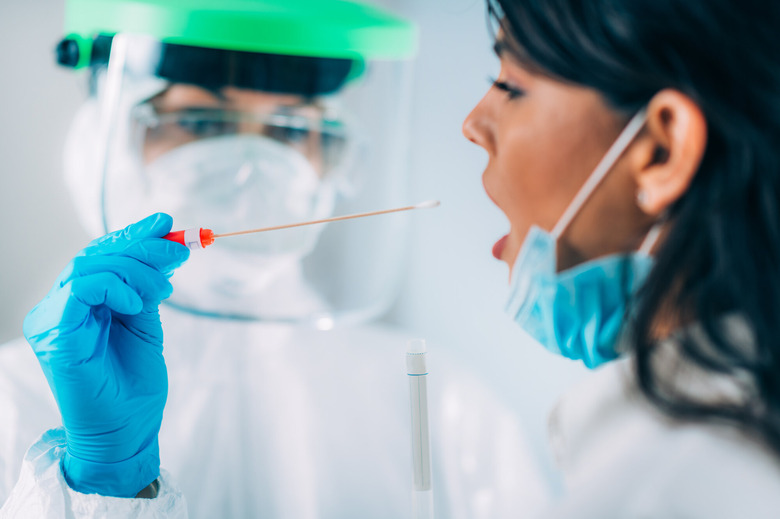Doctors Found Another Strange Coronavirus Symptom No One Can Explain
- Some of the people infected with the novel coronavirus who survive COVID-19 will then experience persistent symptoms for weeks or even months after the illness, in what's known as "Long COVID."
- Doctors are still trying to understand the lingering symptoms, with the Westchester Medical Center in New York running a treatment and study program for long haulers.
- Now, a new report explains another strange coronavirus symptom that can appear with Long COVID: Some people have experienced skin peeling off their hands and a strange purple discoloration in their fingers.
COVID-19 has three possible outcomes, and only one is ideal. Infection with the novel coronavirus isn't fatal for most people, as doctors have learned how to treat the illness and save more lives. But surviving COVID-19 is only the first step of the healing process for so many people out there. The virus might be gone after a few weeks, but the symptoms can linger for months after beating the illness. An increasing number of patients have been reporting Long COVID symptoms that last far longer than anyone expected.
Some of the most common Long COVID symptoms mimic experiences from the illness, like shortness of breath and fatigue. Other symptoms are stranger and rarer, but people have complained of all sorts of unusual manifestations of COVID-19 after surviving the illness. Now, a new report detailing Westchester Medical Center's treatment program targeting COVID-19 long-haulers reveals another unexpected symptom that can appear in Long COVID.
Westchester Medical Center is accepting new patients for the post-COVID-19 Recovery Program, ABC News reported, detailing a few cases of patients who were infected with the virus and then continued experiencing symptoms. More than 100 patients are being treated for Long COVID at the hospital. But Westchester Medical Center isn't just treating the long haulers, it's also trying to understand why the virus can lead to this baffling form of illness in some survivors.
Amy Siniscalchi is one of the patients who was infected with SARS-CoV-2 in New York early in the pandemic. She loves hiking, but the illness robbed her of that passion. "I couldn't make it up the trail," she said. "It was not a steep trail. We had to turn back." Some 10 months later, she's still dealing with COVID-19 symptoms. "We're some of the lucky ones," she said. "We're alive, but we're not living."
Fatigue and shortness of breath are the most significant symptoms Siniscalchi has experienced. "This fatigue stops you in your tracks," she said. "You can't function when you have a fatigue like this. I have COVID-induced asthma, which I've never had any respiratory issues prior in my life."
Additionally, she is also experiencing a condition that doctors refer to as "COVID hands." The condition involves peeling skin and fingernails that can turn purple. "My hands would peel," she said. "I would wake up one day, and my hands would feel like sandpaper, and they would peel in their entirety."
Skin symptoms have been reported early in the pandemic as possible signs of infection. "COVID toe" and skin rashes have been associated with the coronavirus, and then reports showed other dermatological conditions that can follow an infection. COVID hands might be one of the unexpected complications COVID-19 patients can experience.
Doctors have found the hand peeling symptom in other patients before. "This is the most specific COVID rash as not many other skin conditions present in this way. It is known as chilblains and was relatively rare before COVID as it was seen mainly during cold spells and in people who had some problems with circulation in the fingers or toes," a report about skin issues in COVID-19 said in mid-September over at the COVID Symptom Study.
"The link with COVID was made, and this rash tends to be more common in younger people," the doctors explained. "The rash presents itself as reddish and purplish bumps on the fingers or toes and can affect many digits. This type of rash is usually present later in the infection and again may appear weeks after the onset of the viral infection. The fingers and toes are usually sore but not itchy. When the rash recovers, the top layers of the skin may peel where the purplish bumps were."
